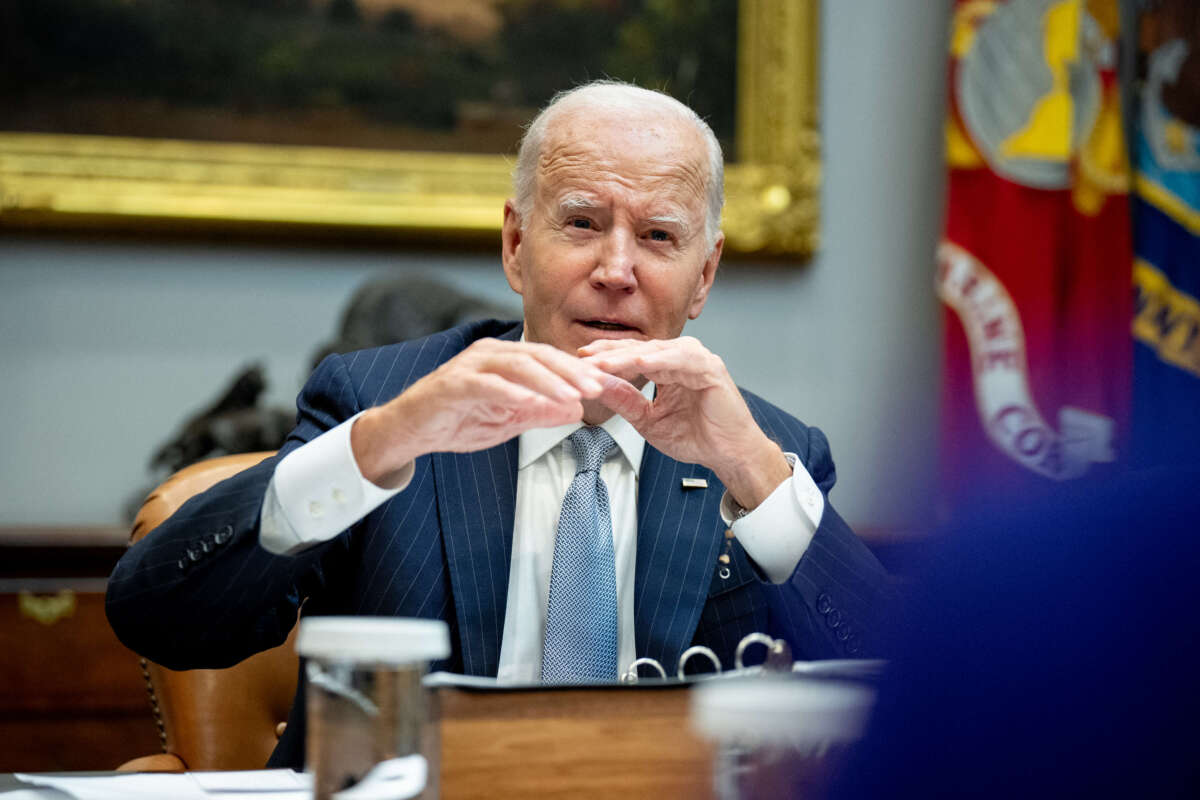Trump’s second term will almost certainly be one of imperial decline, increasing internal chaos, and a further loss of global leadership.
Alfred W. Mccoy
Nov 20, 2024
Some 15 years ago, on December 5, 2010, a historian writing for TomDispatch made a prediction that may yet prove prescient. Rejecting the consensus of that moment that U.S. global hegemony would persist to 2040 or 2050, he argued that “the demise of the United States as the global superpower could come... in 2025, just 15 years from now.”
To make that forecast, the historian conducted what he called “a more realistic assessment of domestic and global trends.” Starting with the global context, he argued that, “faced with a fading superpower,” China, India, Iran, and Russia would all start to “provocatively challenge U.S. dominion over the oceans, space, and cyberspace.” At home in the United States, domestic divisions would “widen into violent clashes and divisive debates… Riding a political tide of disillusionment and despair, a far-right patriot captures the presidency with thundering rhetoric, demanding respect for American authority and threatening military retaliation or economic reprisal.” But, that historian concluded, “the world pays next to no attention as the American Century ends in silence.”
Now that a “far-right patriot,” one Donald J. Trump, has indeed captured (or rather recaptured) the presidency “with thundering rhetoric,” let’s explore the likelihood that a second Trump term in office, starting in the fateful year 2025, might actually bring a hasty end, silent or otherwise, to an “American Century” of global dominion.
Making the Original Prediction
Let’s begin by examining the reasoning underlying my original prediction. (Yes, of course, that historian was me.) Back in 2010, when I picked a specific date for a rising tide of American decline, this country looked unassailably strong both at home and abroad. The presidency of Barack Obama was producing a “post-racial” society. After recovering from the 2008 financial crisis, the U.S. was on track for a decade of dynamic growth—the auto industry saved, oil and gas production booming, the tech sector thriving, the stock market soaring, and employment solid. Internationally, Washington was the world’s preeminent leader, with an unchallenged military, formidable diplomatic clout, unchecked economic globalization, and its democratic governance still the global norm.
Looking forward, leading historians of empire agreed that America would remain the world’s sole superpower for the foreseeable future. Writing in the Financial Times in 2002, for instance, Yale professor Paul Kennedy, author of a widely read book on imperial decline, argued that “America’s array of force is staggering,” with a mix of economic, diplomatic, and technological dominance that made it the globe’s “single superpower” without peer in the entire history of the world. Russia’s defense budget had “collapsed” and its economy was “less than that of the Netherlands.” Should China’s high growth rates continue for another 30 years, it “might be a serious challenger to U.S. predominance”—but that wouldn’t be true until 2032, if then. While America’s “unipolar moment” would surely not “continue for centuries,” its end, he predicted, “seems a long way off for now.”
Writing in a similar vein in The New York Times in February 2010, Piers Brendon, a historian of Britain’s imperial decline, dismissed the “doom mongers” who “conjure with Roman and British analogies in order to trace the decay of American hegemony.” While Rome was riven by “internecine strife” and Britain ran its empire on a shoestring budget, the U.S. was “constitutionally stable” with “an enormous industrial base.” Taking a few “relatively simple steps,” he concluded, Washington should be able to overcome current budgetary problems and perpetuate its global power indefinitely.
After the steady erosion of its global power for several decades, America is no longer the—or perhaps even an—“exceptional” nation floating above the deep global currents that shape the politics of most countries.
When I made my very different prediction nine months later, I was coordinating a network of 140 historians from universities on three continents who were studying the decline of earlier empires, particularly those of Britain, France, and Spain. Beneath the surface of this country’s seeming strength, we could already see the telltale signs of decline that had led to the collapse of those earlier empires.
By 2010, economic globalization was cutting good-paying factory jobs here, income inequality was widening, and corporate bailouts were booming—all essential ingredients for rising working-class resentment and deepening domestic divisions. Foolhardy military misadventures in Iraq and Afghanistan, pushed by Washington elites trying to deny any sense of decline, stoked simmering anger among ordinary Americans, slowly discrediting the very idea of international commitments. And the erosion of America’s relative economic strength from half the world’s output in 1950 to a quarter in 2010 meant the wherewithal for its unipolar power was fading fast.
Only a “near-peer” competitor was needed to turn that attenuating U.S. global hegemony into accelerating imperial decline. With rapid economic growth, a vast population, and the world’s longest imperial tradition, China seemed primed to become just such a country. But back then, Washington’s foreign policy elites thought not and even admitted China to the World Trade Organization (WTO), fully confident, according to two Beltway insiders, that “U.S. power and hegemony could readily mold China to the United States’ liking.”
Our group of historians, mindful of the frequent imperial wars fought when near-peer competitors finally confronted the reigning hegemon of their moment—think Germany versus Great Britain in World War I—fully expected China’s challenge would not be long in coming. Indeed, in 2012, just two years after my prediction, the U.S. National Intelligence Council warned that “China alone will probably have the largest economy, surpassing that of the United States a few years before 2030” and this country would no longer be “a hegemonic power.”
Just a year after that, China’s president, Xi Jinping, drawing on a massive $4 trillion in foreign-exchange reserves accumulated in the decade after joining the WTO, announced his bid for global power through what he called “the Belt and Road Initiative,” history’s largest development program. It was designed to make Beijing the center of the global economy.
In the following decade, the U.S.-China rivalry would become so intense that, last September, Secretary of the Air Force Frank Kendall warned: “I’ve been closely watching the evolution of [China’s] military for 15 years. China is not a future threat; China is a threat today.”
The Global Rise of the Strongman
Another major setback for Washington’s world order, long legitimated by its promotion of democracy (whatever its own dominating tendencies), came from the rise of populist strongmen worldwide. Consider them part of a nationalist reaction to the West’s aggressive economic globalization.
At the close of the Cold War in 1991, Washington became the planet’s sole superpower, using its hegemony to forcefully promote a wide-open global economy—forming the World Trade Organization in 1995, pressing open-market “reforms” on developing economies, and knocking down tariff barriers worldwide. It also built a global communications grid by laying 700,000 miles of fiber-optic submarine cables and then launching 1,300 satellites (now 4,700).
By exploiting that very globalized economy, however, China’s industrial output soared to $3.2 trillion by 2016, surpassing both the U.S. and Japan, while simultaneously eliminating 2.4 million American jobs between 1999 and 2011, ensuring the closure of factories in countless towns across the South and Midwest. By fraying social safety nets while eroding protection for labor unions and local businesses in both the U.S. and Europe, globalization reduced the quality of life for many, while creating inequality on a staggering scale and stoking a working-class reaction that would crest in a global wave of angry populism.
Riding that wave, right-wing populists have been winning a steady succession of elections—in Russia (2000), Israel (2009), Hungary (2010), China (2012), Turkey (2014), the Philippines (2016), the U.S. (2016), Brazil (2018), Italy (2022), the Netherlands (2023), Indonesia (2024), and the U.S. again (2024).
Set aside their incendiary us-versus-them rhetoric, however, and look at their actual achievements and those right-wing demagogues turn out to have a record that can only be described as dismal. In Brazil, Jair Bolsonaro ravaged the vast Amazon rainforest and left office amid an abortive coup. In Russia, Vladimir Putin invaded Ukraine, sacrificing his country’s economy to capture some more land (which it hardly lacked). In Turkey, Recep Erdogan caused a crippling debt crisis, while jailing 50,000 suspected opponents. In the Philippines, Rodrigo Duterte murdered 30,000 suspected drug users and courted China by giving up his country’s claims in the resource-rich South China Sea. In Israel, Benjamin Netanyahu has wreaked havoc on Gaza and neighboring lands, in part to stay in office and stay out of prison.
Prospects for Donald Trump’s Second Term
After the steady erosion of its global power for several decades, America is no longer the—or perhaps even an—“exceptional” nation floating above the deep global currents that shape the politics of most countries. And as it has become more of an ordinary country, it has also felt the full force of the worldwide move toward strongman rule. Not only does that global trend help explain Trump’s election and his recent reelection, but it provides some clues as to what he’s likely to do with that office the second time around.
In the globalized world America made, there is now an intimate interaction between domestic and international policy. That will soon be apparent in a second Trump administration whose policies are likely to simultaneously damage the country’s economy and further degrade Washington’s world leadership.
As the world shifts to renewable energy and all-electric vehicles, Trump’s policies will undoubtedly do lasting damage to the American economy.
Let’s start with the clearest of his commitments: environmental policy. During the recent election campaign, Trump called climate change “a scam” and his transition team has already drawn up executive orders to exit from the Paris climate accords. By quitting that agreement, the U.S. will abdicate any leadership role when it comes to the most consequential issue facing the international community while reducing pressure on China to curb its greenhouse gas emissions. Since these two countries now account for nearly half (45%) of global carbon emissions, such a move will ensure that the world blows past the target of keeping this planet’s temperature rise to 1.5°C until the end of the century. Instead, on a planet that’s already had 12 recent months of just such a temperature rise, that mark is expected to be permanently reached by perhaps 2029, the year Trump finishes his second term.
On the domestic side of climate policy, Trump promised last September that he would “terminate the Green New Deal, which I call the Green New Scam, and rescind all unspent funds under the misnamed Inflation Reduction Act.” On the day after his election, he committed himself to increasing the country’s oil and gas production, telling a celebratory crowd, “We have more liquid gold than any country in the world.” He will undoubtedly also block wind farm leases on Federal lands and cancel the $7,500 tax credit for purchasing an electrical vehicle.
As the world shifts to renewable energy and all-electric vehicles, Trump’s policies will undoubtedly do lasting damage to the American economy. In 2023, the International Renewable Energy Agency reported that, amid continuing price decreases, wind and solar power now generate electricity for less than half the cost of fossil fuels. Any attempt to slow the conversion of this country’s utilities to the most cost-effective form of energy runs a serious risk of ensuring that American-made products will be ever less competitive.
To put it bluntly, he seems to be proposing that electricity users here should pay twice as much for their power as those in other advanced nations. Similarly, as relentless engineering innovation makes electric vehicles cheaper and more reliable than petrol-powered ones, attempting to slow such an energy transition is likely to make the U.S. auto industry uncompetitive, at home and abroad.
Calling tariffs “the greatest thing ever invented,” Trump has proposed slapping a 20% duty on all foreign goods and 60% on those from China. In another instance of domestic-foreign synergy, such duties will undoubtedly end up crippling American farm exports, thanks to retaliatory overseas tariffs, while dramatically raising the cost of consumer goods for Americans, stoking inflation, and slowing consumer spending.
Reflecting his aversion to alliances and military commitments, Trump’s first foreign policy initiative will likely be an attempt to negotiate an end to the war in Ukraine. During a CNN town hall in May 2023, he claimed he could stop the fighting “in 24 hours.” Last July, he added: “I would tell [Ukraine’s president] Zelenskyy, no more. You got to make a deal.”
Just two days after the November election, according toThe Washington Post, Trump reputedly told Russian President Vladimir Putin in a telephone call, “not to escalate the war in Ukraine and reminded him of Washington’s sizable military presence in Europe.” Drawing on sources inside the Trump transition team, The Wall Street Journalreported that the new administration is considering “cementing Russia’s seizure of 20% of Ukraine” and forcing Kyiv to forego its bid to join NATO, perhaps for as long as 20 years.
With Russia drained of manpower and its economy pummeled by three years of bloody warfare, a competent negotiator (should Trump actually appoint one) might indeed be able to bring a tenuous peace to a ravaged Ukraine. Since it has been Europe’s frontline of defense against a revanchist Russia, the continent’s major powers would be expected to play a significant role. But Germany’s coalition government has just collapsed; French president Emmanuel Macron is crippled by recent electoral reverses; and the NATO alliance, after three years of a shared commitment to Ukraine, faces real uncertainty with the advent of a Trump presidency.
America’s Allies
Those impending negotiations over Ukraine highlight the paramount importance of alliances for U.S. global power. For 80 years, from World War II through the Cold War and beyond, Washington relied on bilateral and multilateral alliances as a critical force multiplier. With China and Russia both rearmed and increasingly closely aligned, reliable allies have become even more important to maintaining Washington’s global presence. With 32 member nations representing a billion people and a commitment to mutual defense that has lasted 75 years, the North Atlantic Treaty Organization (NATO) is arguably the most powerful military alliance in all of modern history.
Yet Trump has long been sharply critical of it. As a candidate in 2016, he called the alliance “obsolete.” As president, he mocked the treaty’s mutual-defense clause, claiming even “tiny” Montenegro could drag the U.S. into war. While campaigning last February, he announced that he would tell Russia “to do whatever the hell they want” to a NATO ally that didn’t pay what he considered its fair share.
Right after Trump’s election, caught between what one analyst called “an aggressively advancing Russia and an aggressively withdrawing America,” French President Macron insisted that the continent needed to be a “more united, stronger, more sovereign Europe in this new context.” Even if the new administration doesn’t formally withdraw from NATO, Trump’s repeated hostility, particularly toward its crucial mutual-defense clause, may yet serve to eviscerate the alliance.
In the Asia-Pacific region, the American presence rests on three sets of overlapping alliances: the AUKUS entente with Australia and Britain, the Quadrilateral Security Dialogue (with Australia, India, and Japan), and a chain of bilateral defense pacts stretching along the Pacific littoral from Japan through Taiwan to the Philippines. Via careful diplomacy, the Biden administration strengthened those alliances, bringing two wayward allies, Australia and the Philippines that had drifted Beijing-wards, back into the Western fold. Trump’s penchant for abusing allies and, as in his first term, withdrawing from multilateral pacts is likely to weaken such ties and so American power in the region.
Although his first administration famously waged a trade war with Beijing, Trump’s attitude toward the island of Taiwan is bluntly transactional. “I think, Taiwan should pay us for defense,” he said last June, adding: “You know, we’re no different than an insurance company. Taiwan doesn’t give us anything.” In October, he toldThe Wall Street Journal that he would not have to use military force to defend Taiwan because China’s President Xi “respects me and he knows I’m f—— crazy.” Bluster aside, Trump, unlike his predecessor Joe Biden, has never committed himself to defend Taiwan from a Chinese attack.
Should Beijing indeed attack Taiwan outright or, as appears more likely, impose a crippling economic blockade on the island, Trump seems unlikely to risk a war with China. The loss of Taiwan would break the U.S. position along the Pacific littoral, for 80 years the fulcrum of its global imperial posture, pushing its naval forces back to a “second island chain” running from Japan to Guam. Such a retreat would represent a major blow to America’s imperial role in the Pacific, potentially making it no longer a significant player in the security of its Asia-Pacific allies.
A Silent U.S. Recessional
Adding up the likely impact of Donald Trump’s policies in this country, Asia, Europe, and the international community generally, his second term will almost certainly be one of imperial decline, increasing internal chaos, and a further loss of global leadership. As “respect for American authority” fades, Trump may yet resort to “threatening military retaliation or economic reprisal.” But as I predicted back in 2010, it seems quite likely that “the world pays next to no attention as the American Century ends in silence.”

© 2023 TomDispatch.com
Alfred W. Mccoy is professor of history at the University of Wisconsin-Madison is the author of "In the Shadows of the American Century: The Rise and Decline of U.S. Global Power". Previous books include: "Torture and Impunity: The U.S. Doctrine of Coercive Interrogation" (University of Wisconsin, 2012), "A Question of Torture: CIA Interrogation, from the Cold War to the War on Terror (American Empire Project)", "Policing America's Empire: The United States, the Philippines, and the Rise of the Surveillance State", and "The Politics of Heroin: CIA Complicity in the Global Drug Trade".
Full Bio >





_42839.jpg)
_34629.jpg)
_53163.jpg)


_19078.jpg)

_57190.jpg)